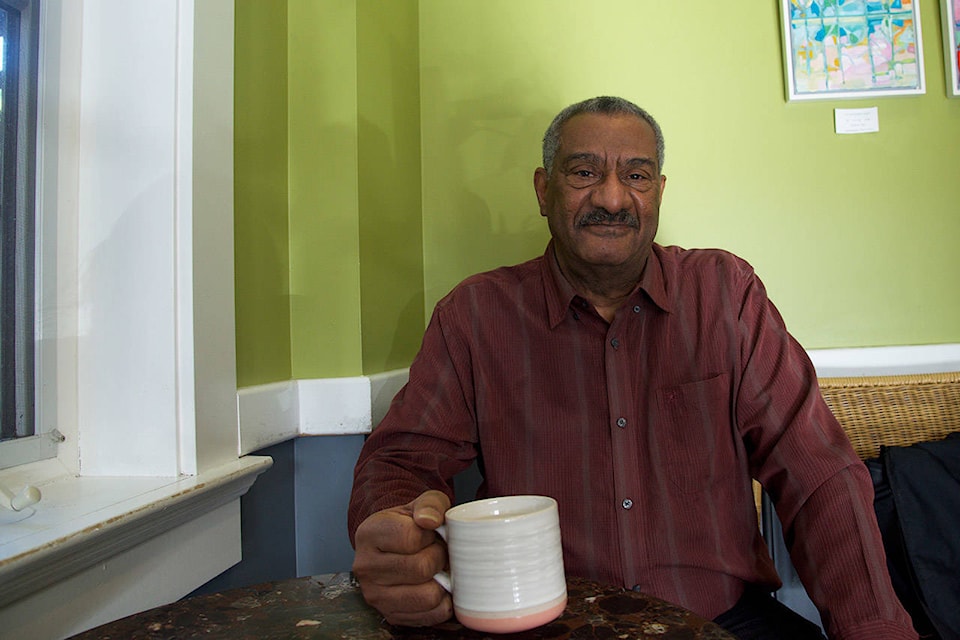In a quiet Oak Bay cafe, Ron Nicholson strummed the side of his coffee mug as he delved into his thoughts. As a director of the BC Black History Awareness Society, NicholsonBดฮิชนูอ๘อ๘ึทs historical knowledge intertwines with his own personal history.
While there were four major migrations of Black people into Canada, and while those who came up to B.C. in 1858 were free people, his own ancestors came up in the 1800s as part of the rush coming to Ontario and Quebec to escape slavery.
Most of these people travelled via a system of secret alliances and shelters known as the Underground Railroad. The term came from the secret code used so information about shelters (or stations) and guides (conductors) could be spoken of with less risk of discovery.
ALSO READ:
Bดฮิชนูอ๘อ๘ึทMy great grandfather, he was a traveller on the Underground Railroad,Bดฮิชนูอ๘อ๘ึท Nicholson said. Bดฮิชนูอ๘อ๘ึทHe and two other companions escaped from slavery in West Virginia and they made their way on foot from West Virginia through to Pennsylvania.Bดฮิชนูอ๘อ๘ึท
For many people of Black descent, it can be difficult to find records or paperwork about ancestors since birth and death certificates were not kept for slaves. However, some abolitionists in the United States and Canada kept records of the people who came through the Underground Railroad, a move that came at great risk since aiding an escaped slave was illegal.
One of these record keepers was William Still, who kept records of Underground Railroad passengers, including where theyBดฮิชนูอ๘อ๘ึทd come from, how much money they were given, and where they were heading.
After slavery was abolished in the States in 1865, Still published a book in 1868, under the title The Underground Railroad.
ALSO READ:
Bดฮิชนูอ๘อ๘ึทI call it the Bible of the Underground Railroad, itBดฮิชนูอ๘อ๘ึทs about two inches thick,Bดฮิชนูอ๘อ๘ึท Nicholson said. Bดฮิชนูอ๘อ๘ึทBut my great grandfather is in those records, on page 228.Bดฮิชนูอ๘อ๘ึท
Adam Nicholson, under the alias John Winkoop, passed through a station in Philadelphia before he and two companions crossed the border into what was then Upper Canada in 1854.
Adam settled in the Niagara area, in what is now southern Ontario, and helped build a community there through farming and construction.
Records in the St. CatharineBดฮิชนูอ๘อ๘ึทs library tell of Adam, including records from a family that hired him to help them on their farm.
ALSO READ:
Bดฮิชนูอ๘อ๘ึทShe talks about how sad it was that he was a big strong man, he could carry 100-pound bags of sugar from the boat docks Bดฮิชนูอ๘อ๘ึทฆ about how he was a good worker, and it was kind of sad because he had all these scars on his back from whippings,Bดฮิชนูอ๘อ๘ึท Nicholson said. Bดฮิชนูอ๘อ๘ึทIt was a kind of emotional reading that for me.Bดฮิชนูอ๘อ๘ึท
Adam built a two-storey home in the Niagara area, one that the Nicholson family lived in for four generations. While Nicholson didnBดฮิชนูอ๘อ๘ึทt live in the house himself, he recalled visiting his uncle at the home when he was a child.
Bดฮิชนูอ๘อ๘ึทMy strongest memory of it was the terrible tasting well water,Bดฮิชนูอ๘อ๘ึท he said with a laugh.
After Nicholson moved to B.C., he took on the role as the family historian and joined the B.C. Black History Awareness Society. Since then, heBดฮิชนูอ๘อ๘ึทs spent 20 years sharing the history of Black Canadians to spread education of their history and awareness of their contribution to the country.
Bดฮิชนูอ๘อ๘ึทItBดฮิชนูอ๘อ๘ึทs amazing how many people arenBดฮิชนูอ๘อ๘ึทt aware of it,Bดฮิชนูอ๘อ๘ึท Nicholson said. Bดฮิชนูอ๘อ๘ึทSo many times people will ask me Bดฮิชนูอ๘อ๘ึทwhere are you from?Bดฮิชนูอ๘อ๘ึท and IBดฮิชนูอ๘อ๘ึทll say Bดฮิชนูอ๘อ๘ึทCanada,Bดฮิชนูอ๘อ๘ึท and theyBดฮิชนูอ๘อ๘ึทll ask Bดฮิชนูอ๘อ๘ึทNo but where are you really from?Bดฮิชนูอ๘อ๘ึท as if I have to be from the West Indies, or I have to be from Africa. But, my family has been here since before Canada was a country Bดฮิชนูอ๘อ๘ึทฆ Most of the people who are asking me, their family hasnBดฮิชนูอ๘อ๘ึทt been here half as long as my family.Bดฮิชนูอ๘อ๘ึท
Nicholson said that while prejudice against Black people has certainly declined, itBดฮิชนูอ๘อ๘ึทs paramount for newer generations to know where theyBดฮิชนูอ๘อ๘ึทve come from.
Bดฮิชนูอ๘อ๘ึทI think itBดฮิชนูอ๘อ๘ึทs important for young Black people in particular to have positive role models, and to learn that theyBดฮิชนูอ๘อ๘ึทve been here as long as most Whites,Bดฮิชนูอ๘อ๘ึท he said.
Like us on and follow us on



